For today's project, we're going to replace the air intake manifold on
a 1998 ford crown victoria police interceptor because it is cracked and
leaks antifreeze.
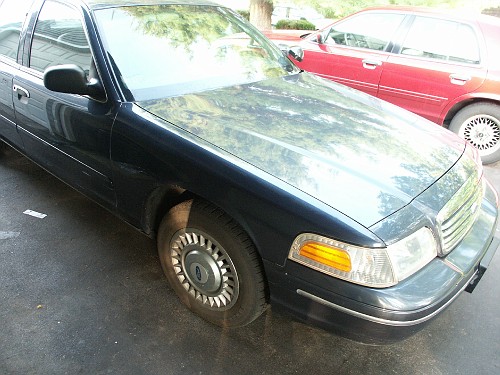
One day driving on the highway, I heard a hissing sound from under the
hood while accelerating hard up a steep incline grade. A little while
later,
a slight odor of antifreeze was present. When the car was stopped and
the hood opened, bright green antifreeze was in places it shouldn't be
like in the fuel injector well, on the back of the alternator, and the
engine valley. Below are a couple pictures taken shortly after this
drive.
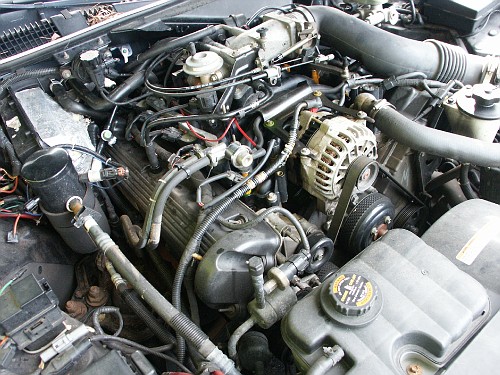
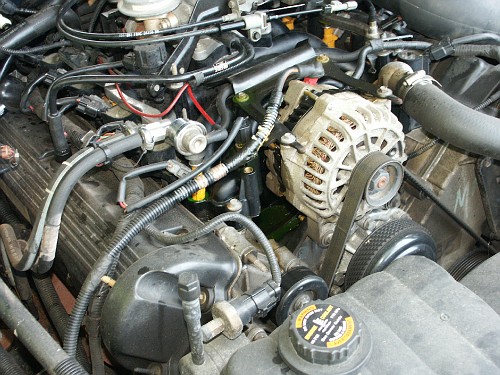
A closeup of the injector well
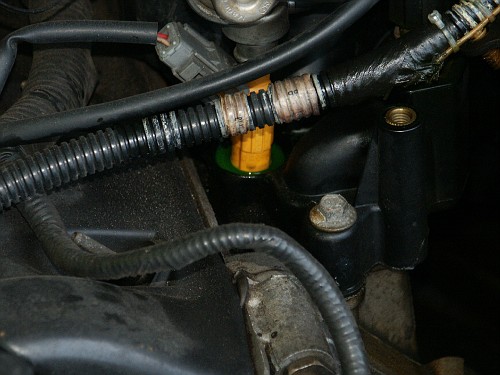
A closeup of the green colored alternator bracket bolt
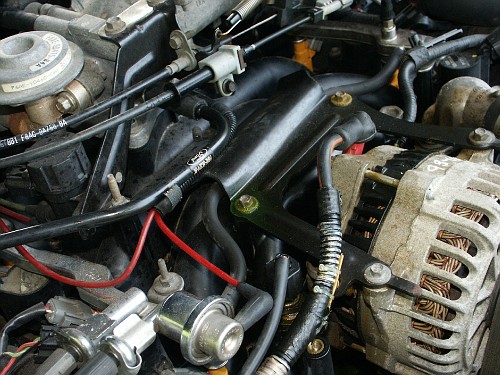
Interestingly, the intake manifold didn't leak visibly when the engine
was idling in the driveway. There was definetly a leak somewhere when
the system was under high pressure though.
So it's part's acquisition time. Here's our replacement intake
manifold, part of the aftermarket dorman 138004 kit.
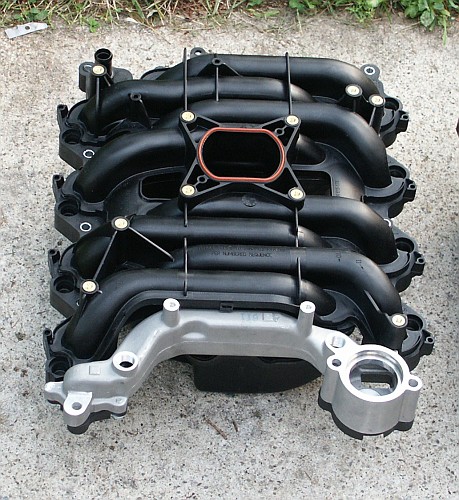
The universal alternator bracket and the two thermostat bolt spacers
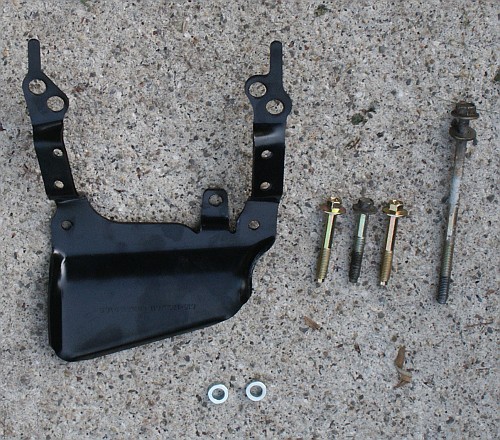
The thermostat and o-ring seal
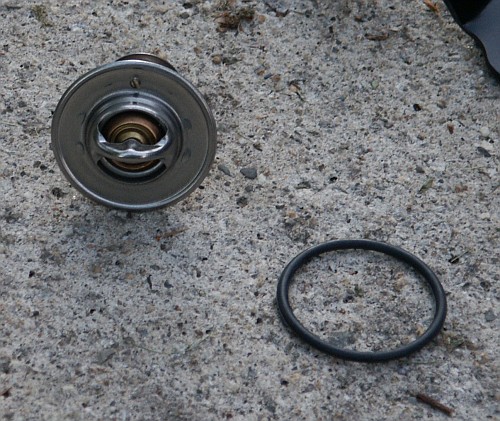
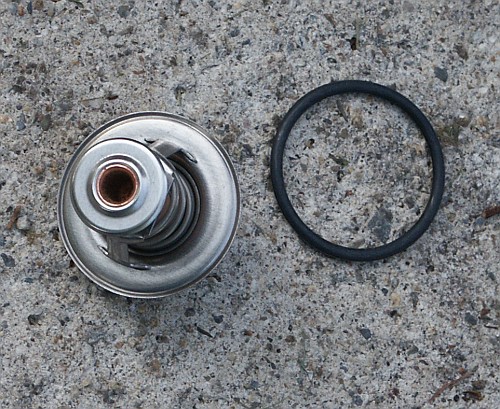
Here are the self tapping bolts that were included to hold down the
ignition coils and throttle cable bracket. The oem ford unit used
machine screws with brass inserts in the intake manifold instead.
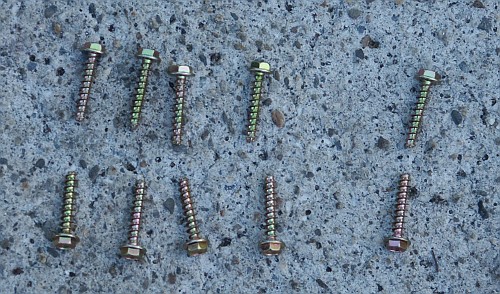

The part number from the box. Do note that this is an early revision of
the dorman intake manifold kit purchased within a few months of when
dorman first offered this kit in 2005. The intake manifold kit
currently offered by dorman for the 96-00 crownvics has a part # of
615-178.

Dorman: 1380004
Hollander: 329-1514
Ford: F8AZ-9424-CA
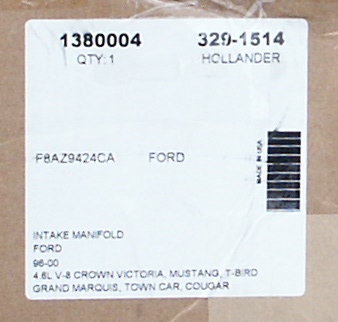
Now that the needed parts have been acquired, the installation can
begin.

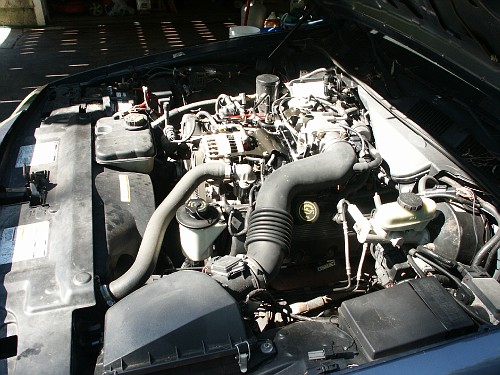
The first step is to disconnect the negative terminal of the battery to
prevent damage to electrical harnesses or electrical fires during our
project.
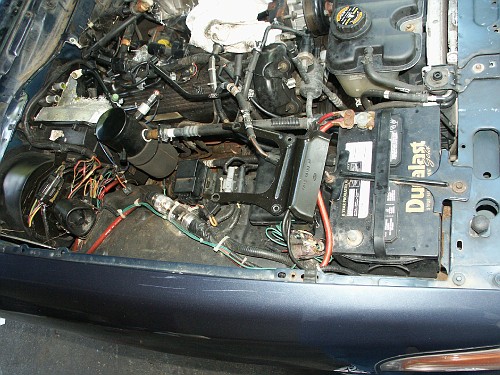
Disconnect accelerator linkage
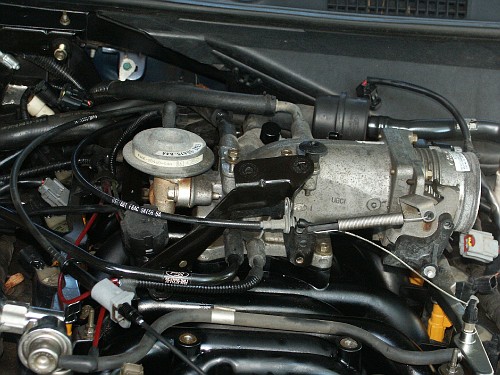
Remove alternator, cruise control cable, a couple vacuum harnesses, air
intake zip tube and various bracketry.

Remove the remains of windshield wiper cowl
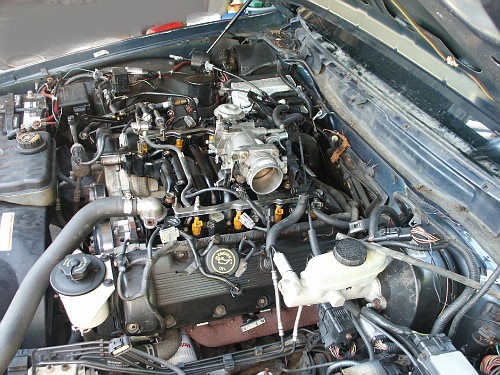
Remove throttle body and air intake plenum
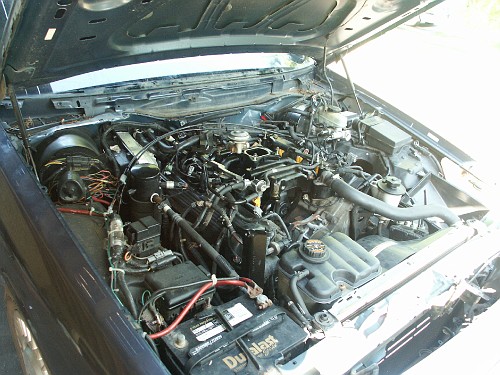
Start disconnecting various electrical harnesses
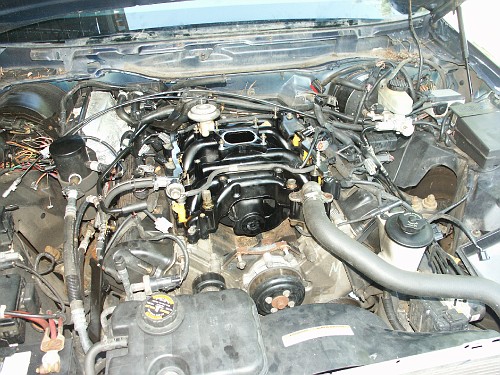
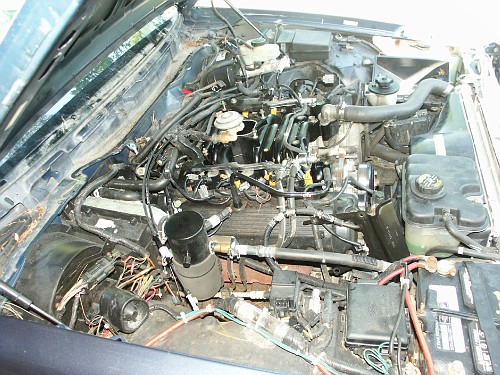
Deal with the crash bracket that protects the rear portion of the
driver's side fuel rail
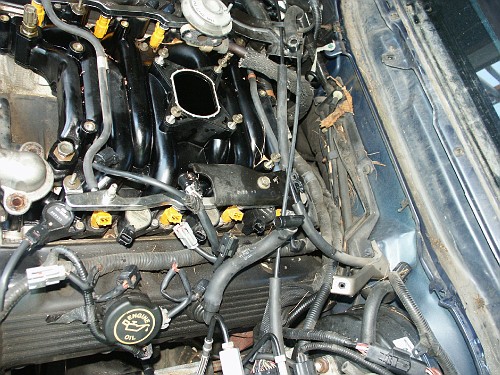
Now that the crash bracket is out of the way, the fuel rail can be
removed.

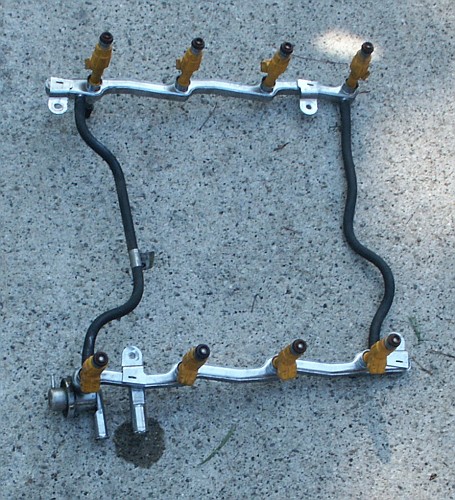
Some people without the proper fuel line spring lock tools have
reported that you
can unbolt the fuel rail from the intake manifold and move it to an
unused area of the engine bay for this project
because the fuel line flex hoses allow a great deal of movement. But
you must be careful not to damage the fragile exposed portion of the
fuel injectors if you choose to leave the fuel rail assembly laying
loose in the engine bay during your project.


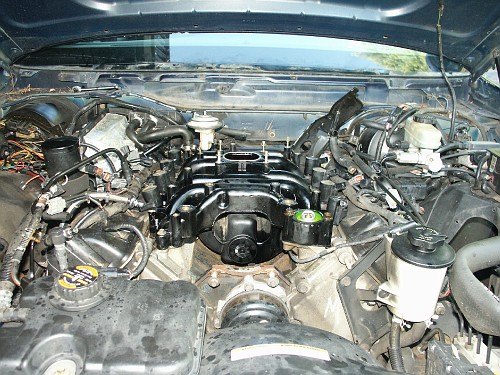
Now remove the ignition coils and the intake manifold itself
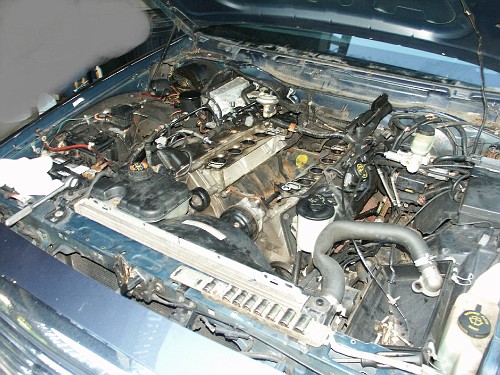

Here's the intake valley with the manifold removed but gaskets still
present. That black metal tube running through the middle of the valley
returns engine coolant from the heater core to the back of the water
pump.
The EGR valve->Tube Nut was stubborn in this case, so the nut
was left installed and the valve removed from the plenum instead.
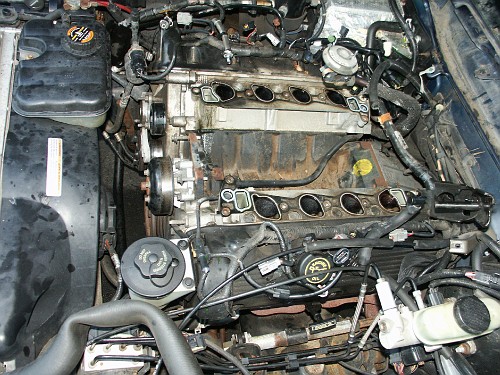
The sensor with the white connector mounted in the aluminum casting on
the driver's side cylinder head is for the fail safe cooling. This
sensor is installed directly into the aluminum casting and does not
directly touch engine coolant or oil, instead it monitors the raw
temperature of the aluminum head casting. This is a new feature for the
1998 model year, 1997 and prior crownvics will not have this sensor.
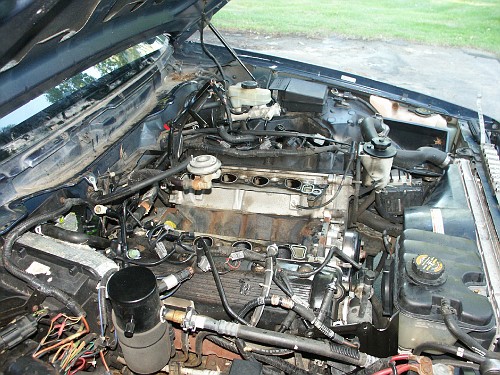
Time for a work break, so the hood is closed.

Notice how much space there is in between the windshield and hood
without the windshield wiper cowl installed?
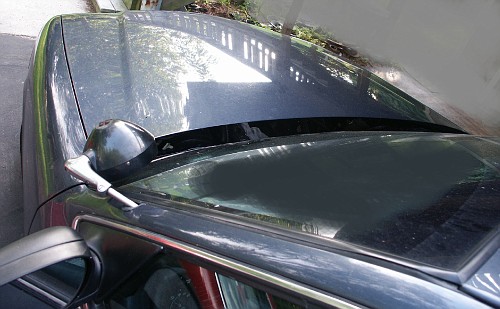
Here is an engine from a different crownvic removed from the car
showing back of the engine with the crash bracket attached. This area
of the engine is normally very difficult to photograph due to the
firewall being in the way.
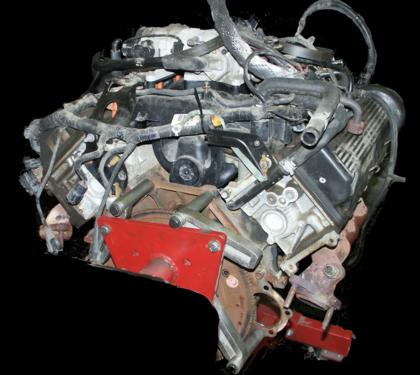

With the wiring moved out of the way
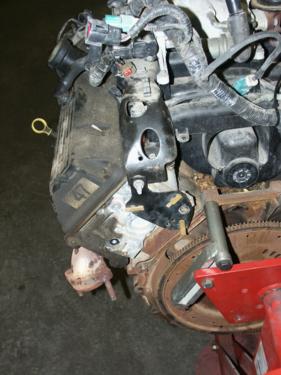
The engine & crash bracket viewed from the side
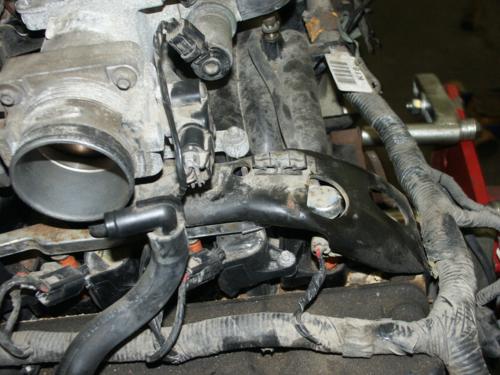
The bottom crash bracket retainers from viewed from the side. To remove
the crash bracket, you first remove the nut for the wiring bracket.
Then slide the wiring bracket out of the way so that you can remove the
bolt/stud that holds the crash bracket to the engine cylinder head.

Here's the crash bracket and it's mounting fasteners removed from the
engine. Note that this bracket will not be present in 1997 and earlier
crownvics.
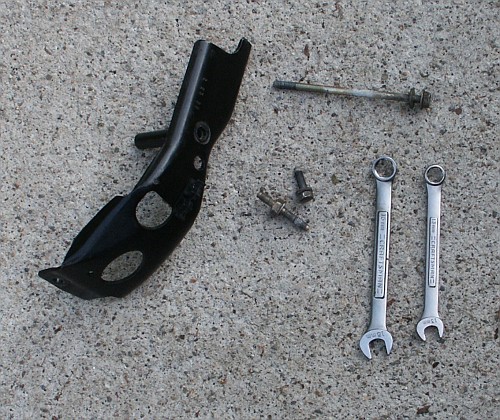
Ocassionally, you'll find a 1998+ crownvic that has had this bracket
chopped in two parts using an angle grinder. This hack saves mechanics
a
little time during intake manifold replacement, but it does make the
car more
likely to have a fuel line fire during a high energy frontal crash.

Sometimes, you'll also find this bracket missing from a 1998+ crownvic.
And instead of having that really long bolt with a big long spacer
bracket underneath, a regular intake manifold hold-down bolt is
installed. All the 1998+ cars have this bracket factory
installed, but mechanics sometimes "decontent" the part to make future
engine work easier.
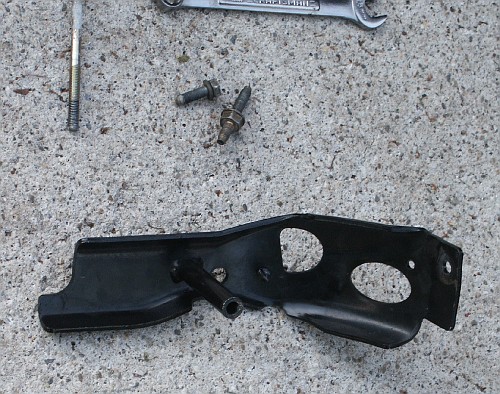

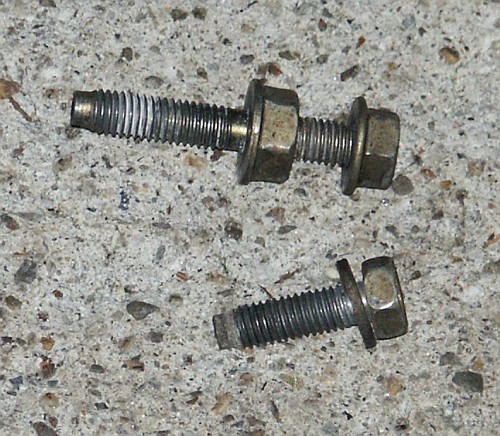
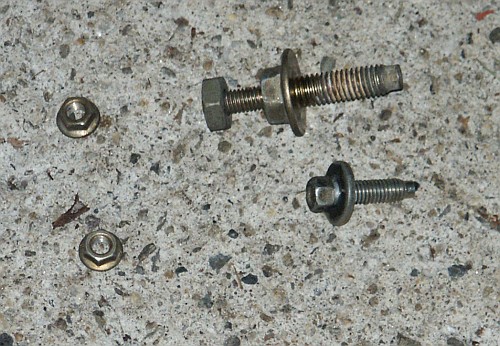
There was a possibility of some rain overnight, so the cylinder head
ports were covered using some saran wrap from the kitchen which was
weighted down with the ignition coils and some rags.

The covering turned out to be an unneeded precaution in this case, but
it would have been a bad thing if lots of water poured into the engine
from an overnight rain.
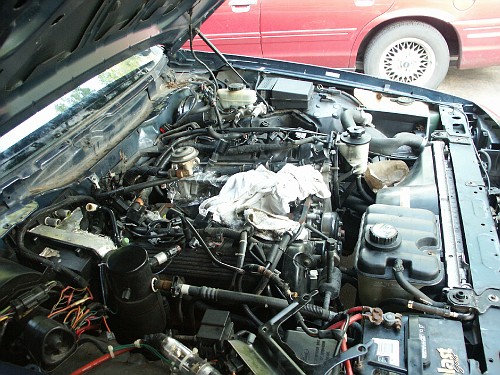
Lets take a look at the old oem ford intake manifold next to to the
aftermarket dorman one. Later oem ford units have the aluminum front
coolant crossover too, but this oem ford unit is an early service unit
manufactured in 2000.
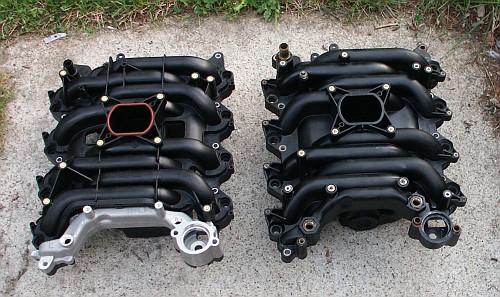
Notice the integrated throttle body gasket on the dorman unit?
Also note that there are no brass inserts to hold the ignition coils
down. Self tapping sheet metal screws are used instead. Not a big deal
as these fasteners are essentially under no load and you probably
wouldn't run into any problems running your crownvic without any
ignition coil fasteners at all.
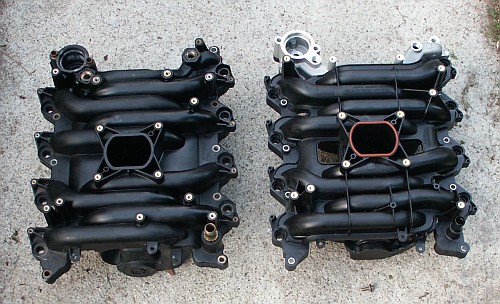
The dorman intake manifold has the intake manifold->cylinder head
bolt torque sequence cast directly into the plastic. There are also a
couple rectangular openings besides where throttle body mounts that
open directly into the intake valley below.

Here's a closeup of the heater hose connection port. The oem ford unit
uses a brass insert.

The dorman unit is a plastic resin heater core connection port instead.
Be careful not to over torque the hose clamps to prevent damage. Do
note that some oem ford crownvic intake manifolds also use a plastic
resin heater connection tube too.
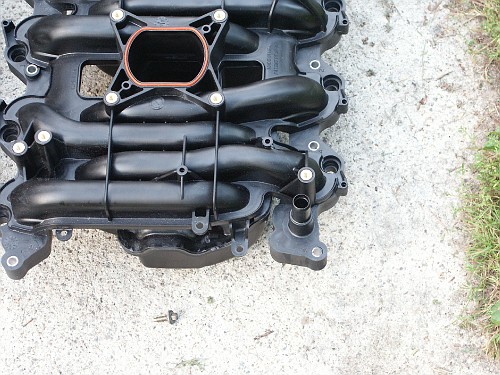
Here's the other side of the intake manifolds that would normally be
connected to the cylinder head ports

Notice the integrated orange and blue colored gaskets on the dorman
intake manifold?

Blue Gasket = Coolant Passage
Orange Gasket = Air Passage

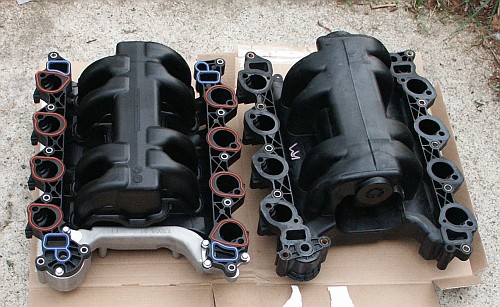
Here's a closeup of where the aluminum coolant crossover meets that
nylon resin portion of the intake manifold.
There appears to be a common misconception among the general public
that the front coolant crossover on their crownvic is solid metal from
one cylinder head connection point to the other. This is definetly not
the case with either the aftermarket dorman intake manifold or the
later oem ford intake manifold that has the aluminum front crossover.
There is a peice of plastic wedged in between the head connection
surface on both intakes.

Here's a closeup of the other side of the intake where the thermostat
would normally be mounted. Do note that the waterneck bolt holes in the
intake manifold are unthreaded and the really long coolant gooseneck
bolts thread into the cylinder head below.

Around the time that I was replacing the intake manifold on this car,
there were a bunch of failures of the under intake manifold hose
reported on crown victoria internet discussion forums. Since I did not
find it desirable to have to remove the newly installed dorman intake
manifold anytime soon, I also elected to replace under intake heater
core return too.
Also back in 2005, replacement gaskets were not avaliable for the
dorman intake manifold. If you wanted new gaskets, you needed to
purchase a new intake manifold kit. It's now 2010 and the dorman intake
manifold gaskets are avaliable aftermarket and parts avaliablity is no
longer a concern.

Two replacement o-rings were also needed
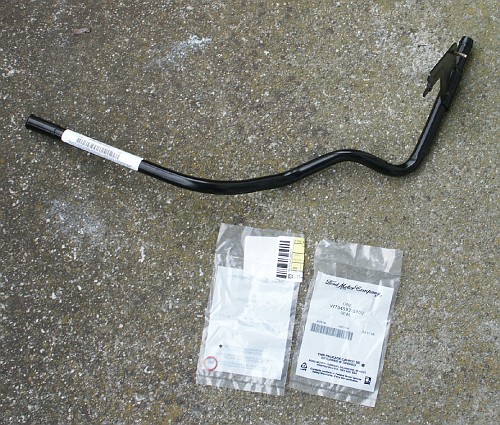
F8AZ-18B402-BA
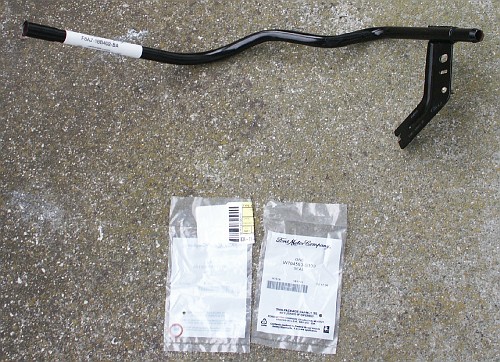
W704593-S100
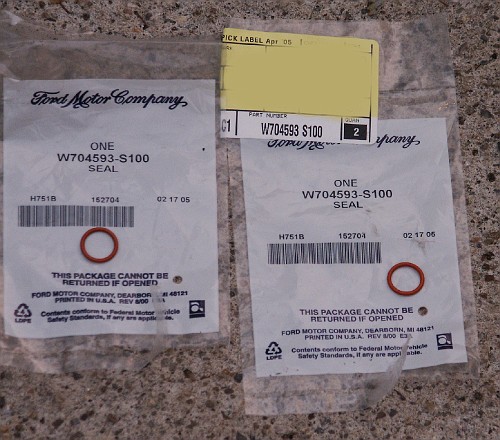
To remove the heater core tube, you first remove the heater hose from
the return tube and then remove the bolt that holds the assembly to the
cylinder head. Here is a picture of a 2000 crownvic engine from the
back showing how the heater core tube mounts in the 1996-2000 cars. Do
note that there is normally an egr dpfe sensor mounted to this bracket
too.

The old heater core return tube was difficult to remove. It did not
simply slide off the waterpump nipple like the shop manual implied. I
ended up cutting the old return tube with a hacksaw and the spinning
the tube off with a pair of visegrip pliers instead.
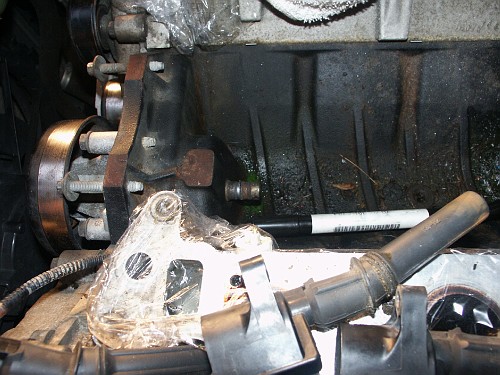
Here's the return tube nipple after being cleaned up with some 600 grit
sand paper and having the two new o-rings installed
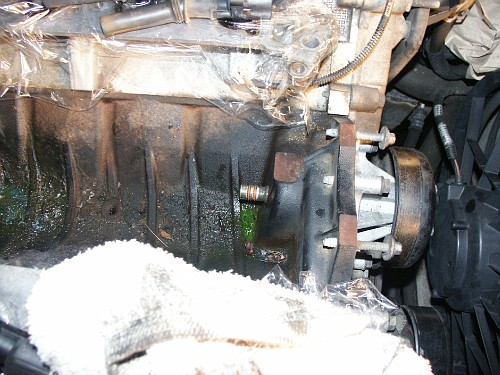
Here's the empty intake valley. If this hose develops a leak, coolant
will flow out the hole in the rear which then will drip down through
the transmission bellhousing area. Many mechanics that aren't familar
with crownvics will misdiagnose a leaky under intake hose as failed
freeze core plugs.

Before intalling the new heater core return tube, lubricate the o-ring
seals on the waterpump nipple with some antifreeze. And make sure to
reinstall the braided ground strap connection prior to installing the
bracket mounting bolt on the back of the engine cylinder head.
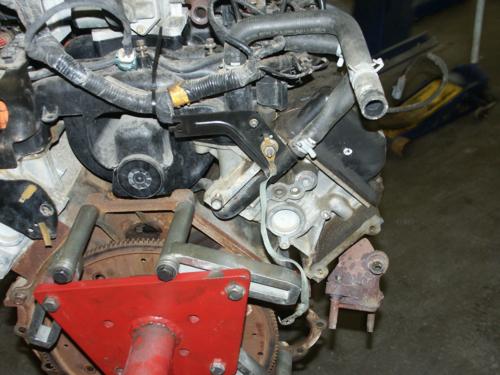
The other end of this ground strap attaches to a metal tab on your
crownvic's firewall above the heater core return tube bracket
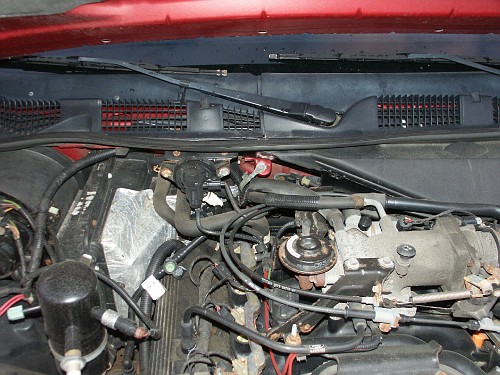
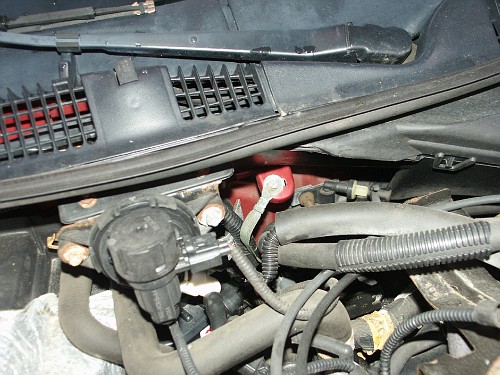
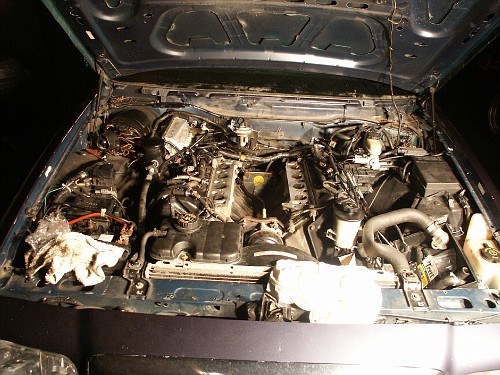
The cylinder head sealing surfaces will need to be cleaned up some
before the new intake manifold can be installed. For this task, some
carburetor cleaner and razor blades worked well for getting those
stubborn carbon desposits and other grime removed. While the razor
blades were out, the remnants of the old egr gasket were also cleaned
off the egr valve and intake plenum.

Here's a test fit of the new intake manifold. Note, coolant temperature
sensors have been loosely installed. And many mounting fasteners are
inserted finger tight to ensure that all mounting fasteners will be
installed in their proper locations
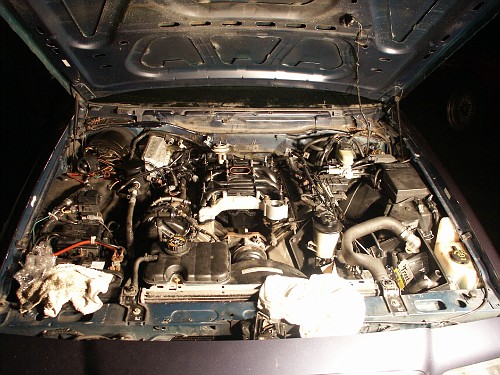
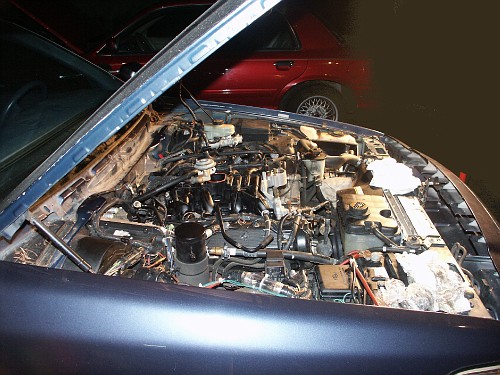
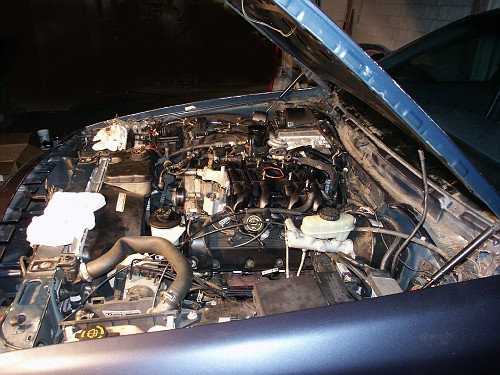
Here's a closeup picture of the failsafe cooling sensor that was
mentioned earlier

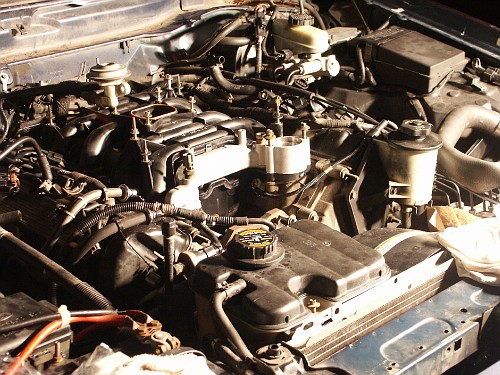
Here's our project car after sitting outside for the night

Here are the really long thermostat bolts. These pass through the
intake manifold and thread into the cylinder head below. The intake
manifold does not contain any threads for these bolts to thread into,
instead the intake manifold is wedged in between the bolt heads and the
cylinder head below.
For removing these bolts, a pneumatic air impact wrench with the
pressure regulator set really low works good. If you encounter stubborn
bolts don't just stick a long breaker bar and push with all your
muscles. You are likely to snap the bolt in two with this method and
then have the frustrating task of removing the broken bolt remnants.
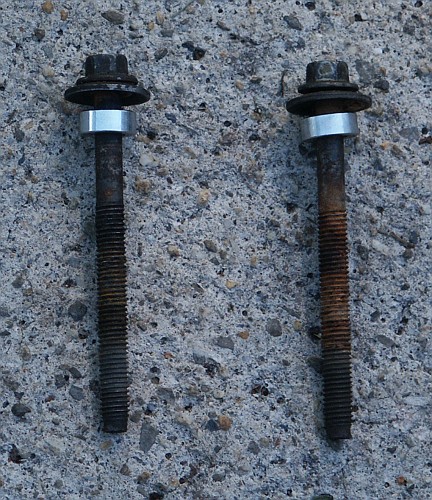
Instead of replacing the waterneck gooseneck like the oem ford kit
does, the aftermarket dorman kit contains two aluminum spacers.


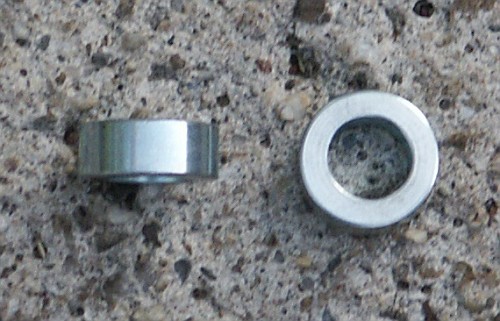
Here are the two really long thermostat gooseneck bolts sitting on top
of the intake manifold for size comparison.
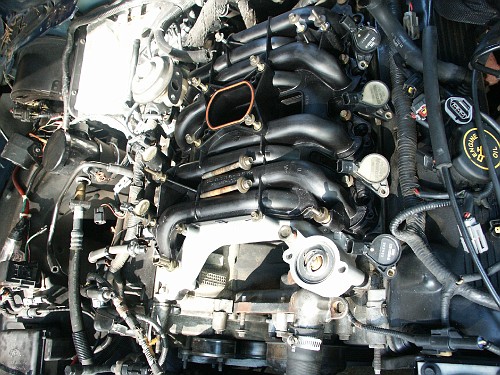
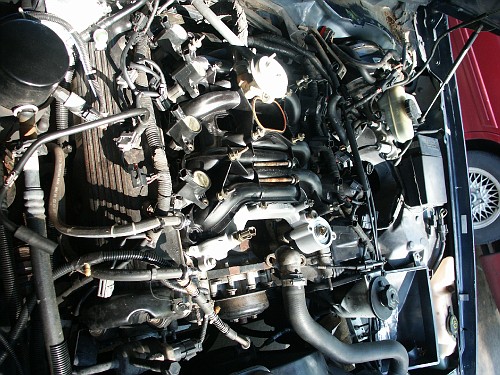
As mentioned previously, use a pneumatic air impact wrench with low air
pressure to loosen stubborn thermostat bolts. If you put lots of force
on the stubborn thermostat bolt head using a long hand ratchet, you're
likely to snap the bolt in two like BlueFusion
did.


I removed both heater core hoses since both the intake manifold and
under intake heater core tube were being replaced
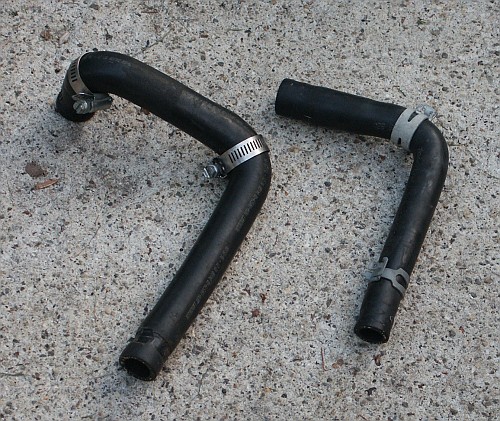
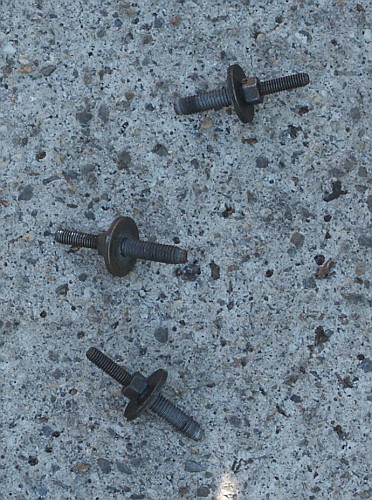
Here is the throttle cable bracket next to the oem machine screw &
aftermarket dorman self tapping bolts

Before inserting the waterneck, make sure that you have the o-ring seal
in place. Also double check that you did not accidentally install the
thermostat upside down. Here is a picture of a different crownvic
showing the proper orientation for these parts. The o-ring goes on top
of the thermostat not under it.

The fuel rail, air intake plenum, and ignition coils reinstalled
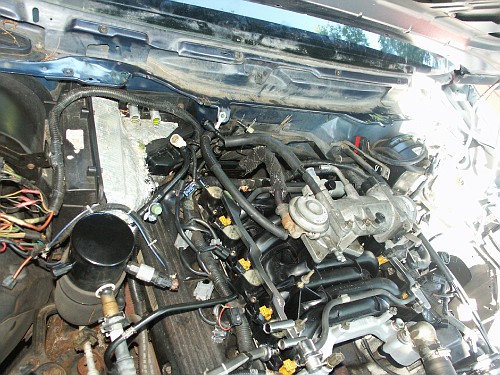

A closeup picture of the fuel rail flex hose spring locks. Do note that
in 1996-1997 crownvics, the fuel rail flex hoses are located on the
driver's side of the car instead of the passenger's side.

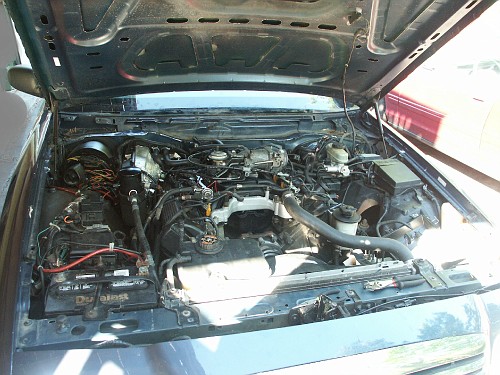
Here's the oem alternator bracket next to the aftermarket dorman one

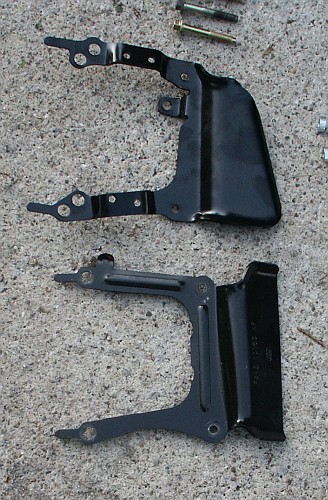
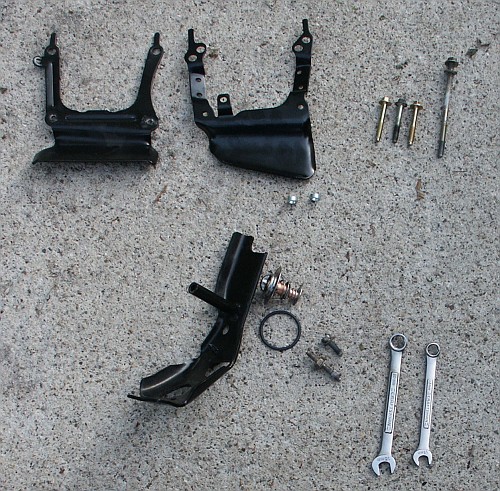
The air intake zip tube, airbox lid, alternator, and most of the
remaining components have now been installed. My car's engine will be
ready to run after the battery is reconnected
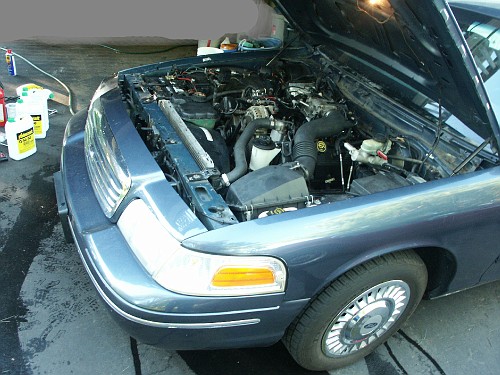
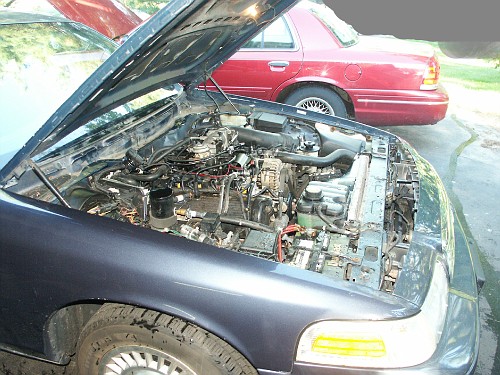
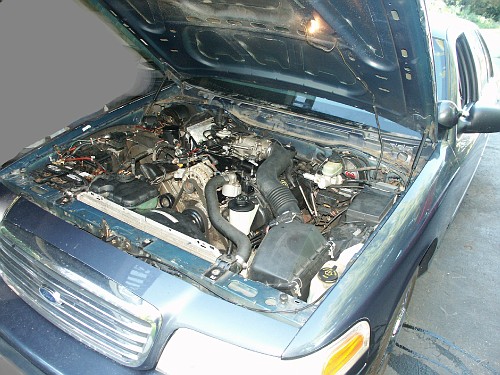
Windshield wipers would be a nice addition to my ride though
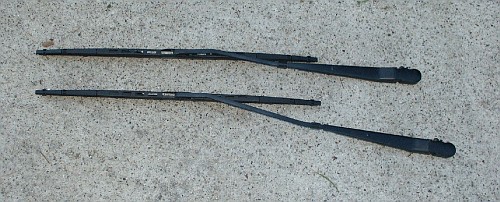
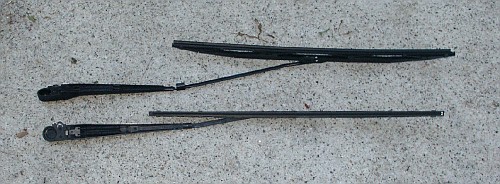
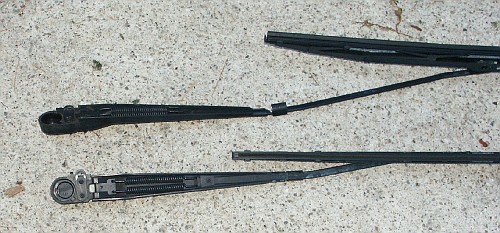
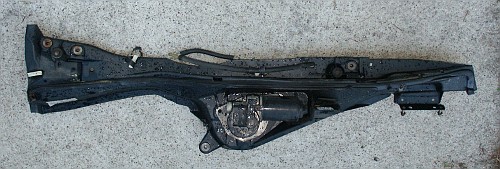
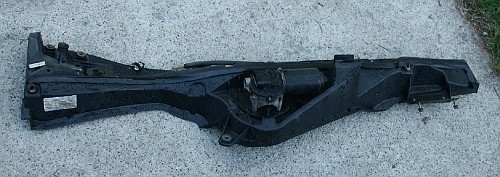

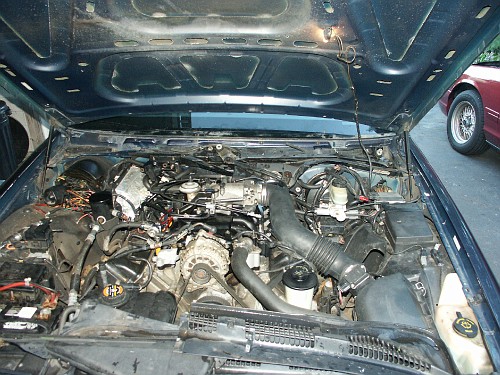
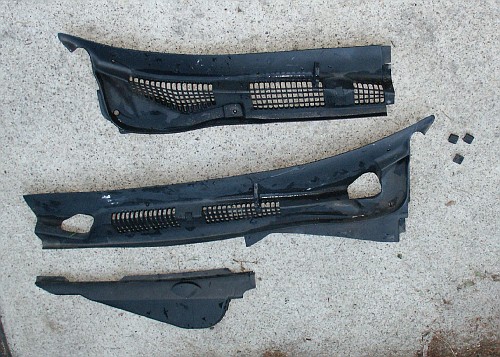


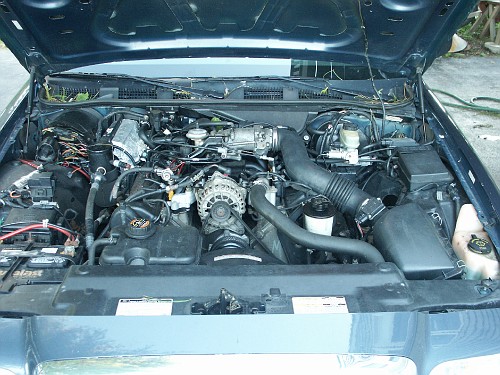
Now that the car is in running condition again, let's take a closer
look at the old intake manifold that failed
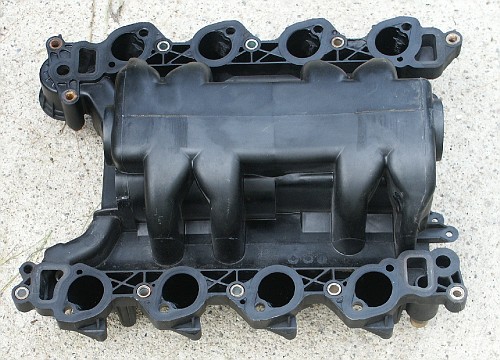
This is a closeup picture of the area on the front of the intake
manifold that leaked coolant. If you look closely, you can see a thin
white line where the crack is located.
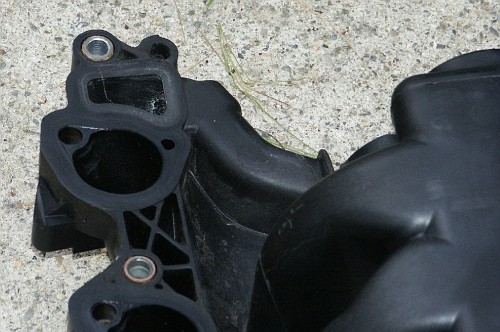
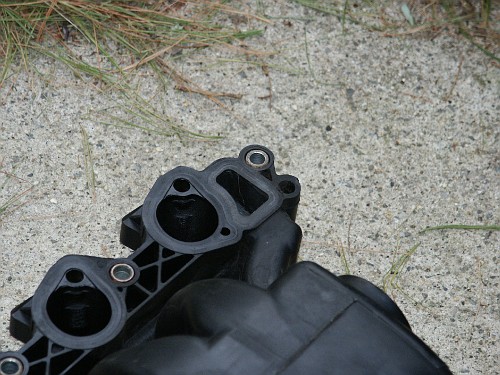
Here's a closeup of the area where the heater core hose would connect.
This area also had an intermittent leak when the coolant system was
under high pressure. This leak caused coolant to squirt out which would
then collect in the #4 spark plug well and short out the #4 ignition
coil causing a bad misfire.
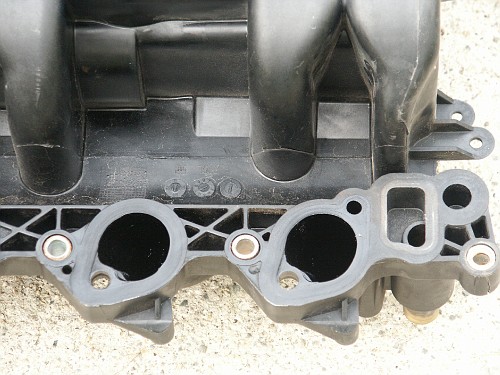

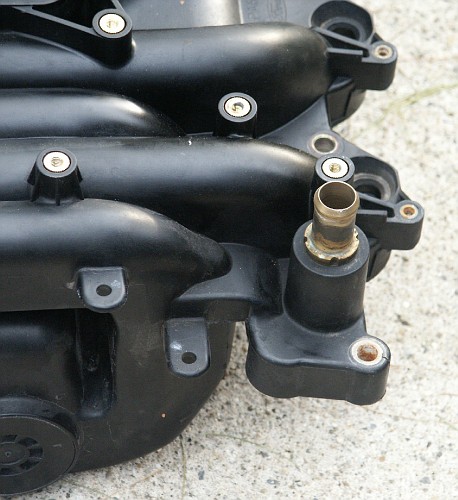
Although there were a handful of problems with this manifold, the brass
heater hose insert still sealed good to the intake manifold.
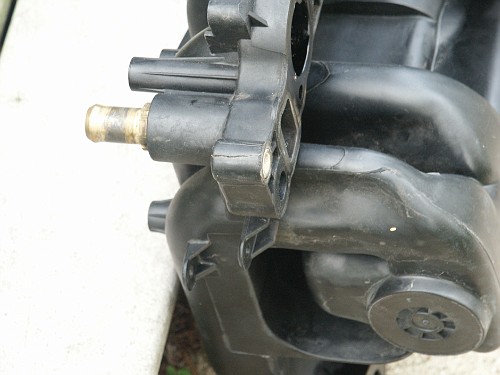
Here is a closeup picture of the area where the thermostat would be
located. Although this area wasn't leaking coolant yet, there are some
cracks starting to develop in this area.

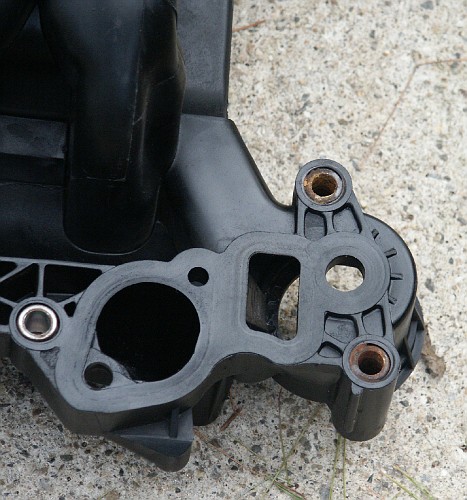
Here's the intake manifold from the top
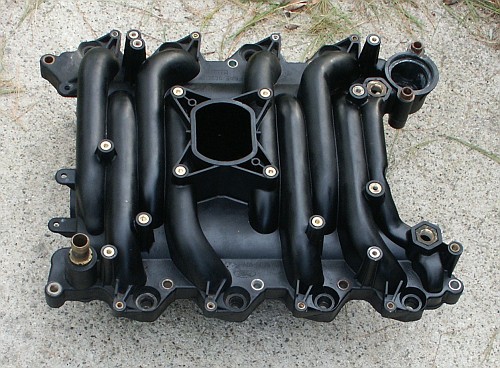
On the front coolant passage are two metal inserts for mounting coolant
temperature sensors. The insert on the right near the thermostat area
started to spin in the plastic casting when the plug was removed.
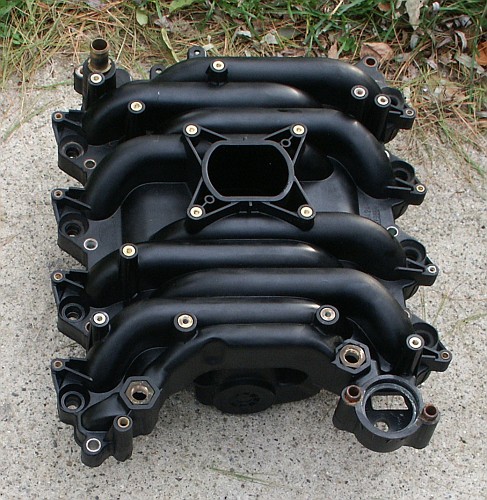
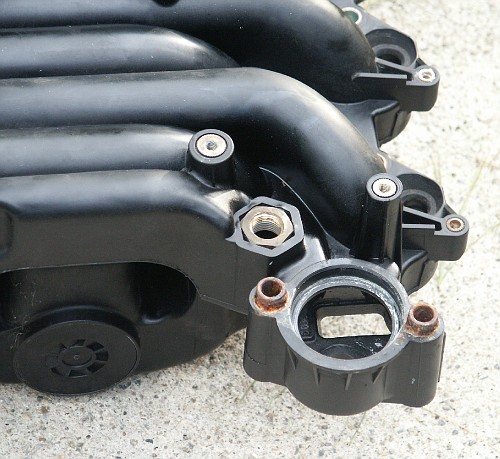
A look at heater core return tubes from other model year crownvics. The
1992-1995 & 1996-1997 return tube assemblies
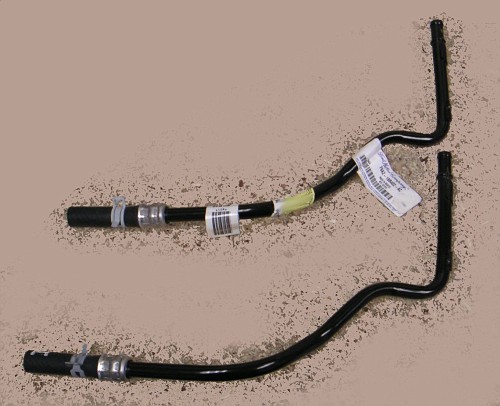
A closeup of the flex hose sections of the return tubes. If the metal
portion of the tube is in good condition, you can cut off the metal
crimp and install regular heater hose with a worm drive clamp here.

The other end of the tube assembly where the heater core hose would
connect and the dpfe sensor be mounted.
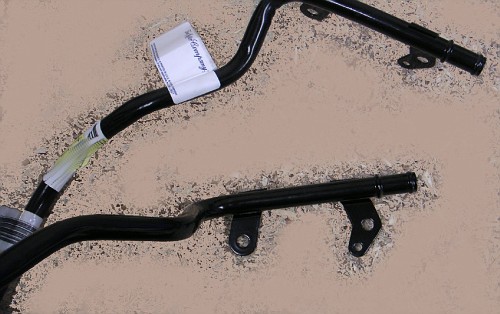
Here's a 1996 ford crown victoria police interceptor with the intake
manifold removed to replace a leaking under intake manifold hose
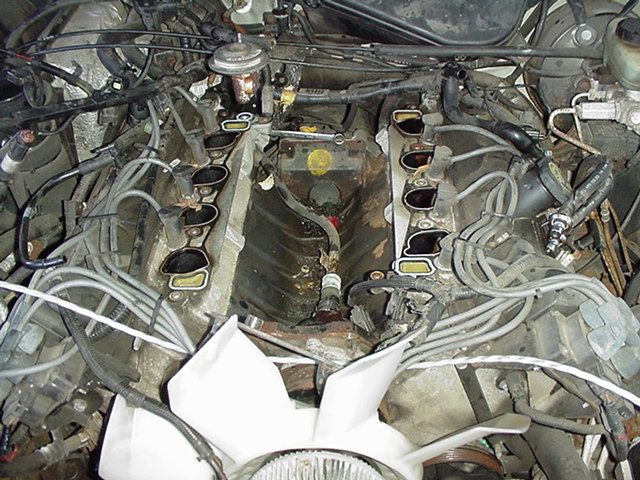
Previous patches had been attempted with the intake still installed on
the car, but they didn't stop the leaks
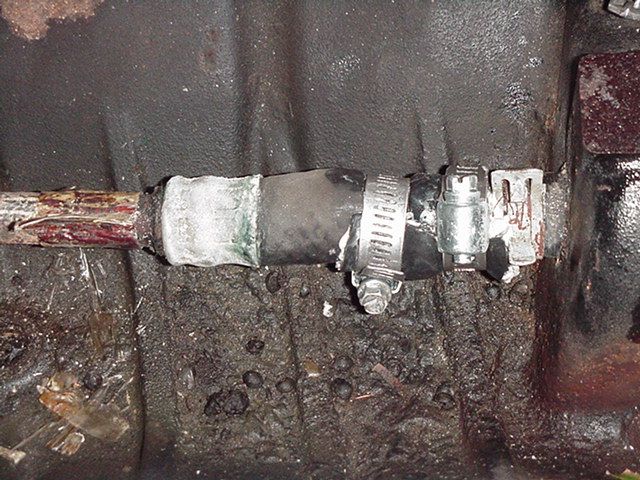
So a new return tube was installed
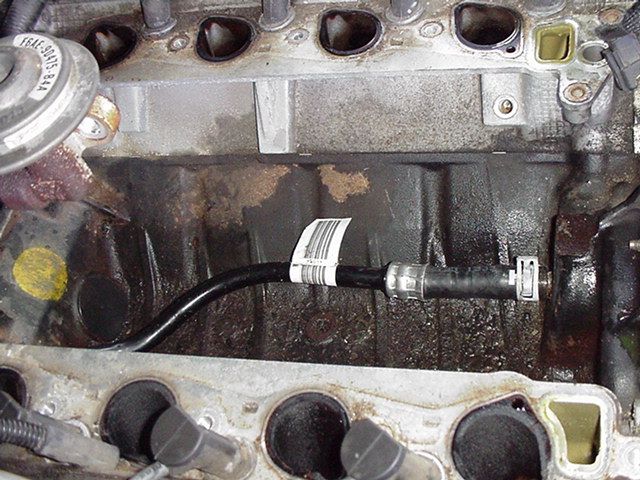
The owner of this car was really low on money, so the original intake
manifold was reinstalled after replacing the under intake heater core
hose. This repair worked acceptably for a little bit, but a few months
later the intake manifold itself developed a leak and had to be
replaced. This resulted in the intake manifold being removed from the
car twice.
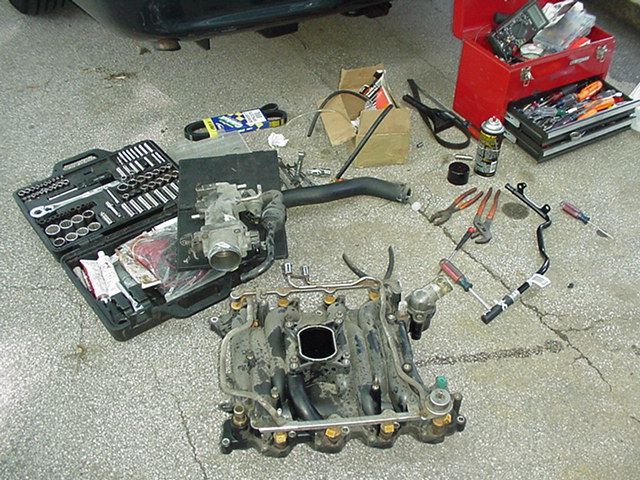
The solid metal return tube used in the 1998-2000 crownvics. You can
install this tube into a 1996-1997 crownvic if you remove the
waterpump, pound out the old heater core tube, and install a 1998+
waterpump tube. But in most instances, you'll probably want to stay
with the original style tube that your car came with.
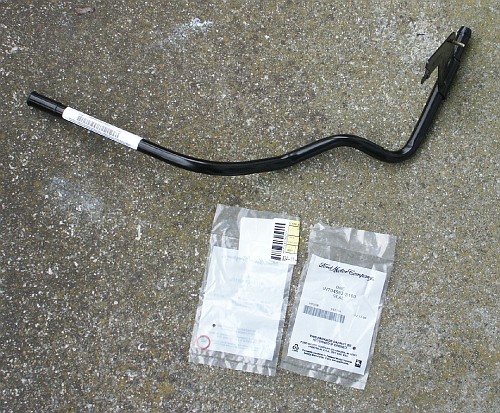
The solid metal heater core return tubes used in the 1998+ crownvics
are more durable than the ones with the rubber flex hose section used
in the 1992-1997 crownvics, but they still do ocassionally fail as metro21
found out on his 2000 crownvic p71
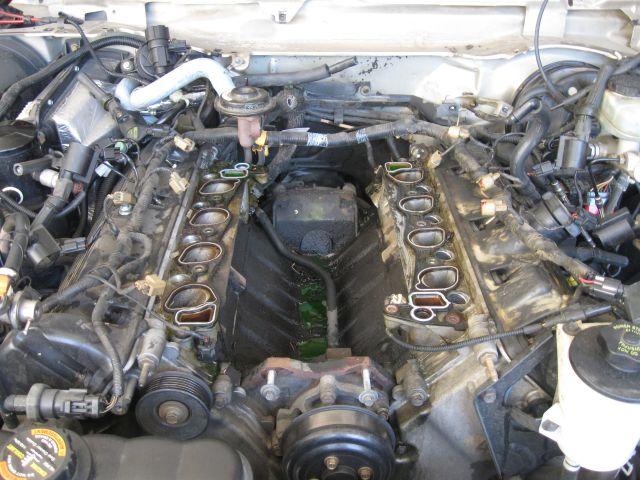
The engine intake valley is not supposed to be filled with antifreeze
like this
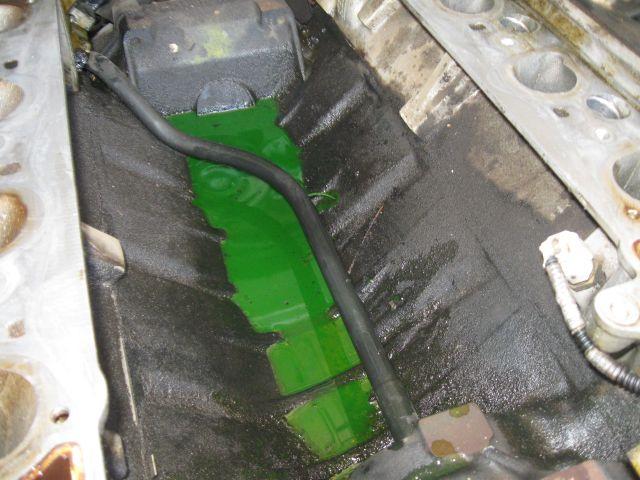
And there is not supposed to be a hole in the tube here either
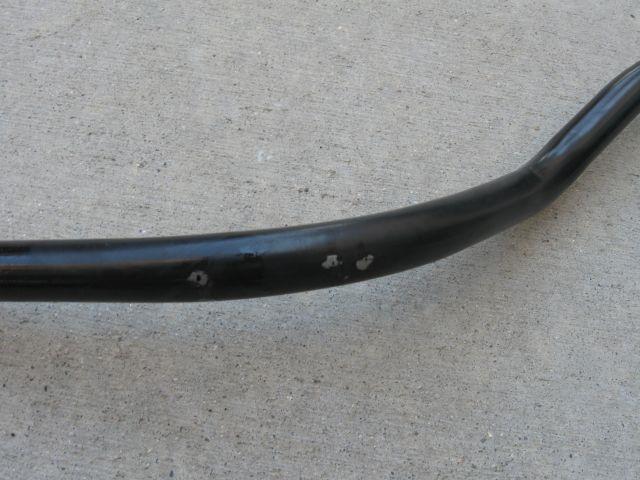
PI vs NPI intake ports
Starting in the 2001 model year, crown victorias recieved PI
"Performance Improved" ports on the intake manifold and cylinder head.
These flow a little better than the NPI "Teardrop" ports used in the
2000 and earlier crownvics. Do note the acronyms used here:
PI = "Performance Improved"
NPI = "Non- Performance Improved"
PI does NOT
equate to police interceptor in this context.
On the left is a PI inake manifold for 01-02 crownvics. On the right is
an NPI intake manifold for 96-00 crownvics.

Here is a closeup of the NPI teardrop ports that you'll find on 96-00
crownvics

And a closeup of the PI ports that you'll find on 2001 and later
crownvics.
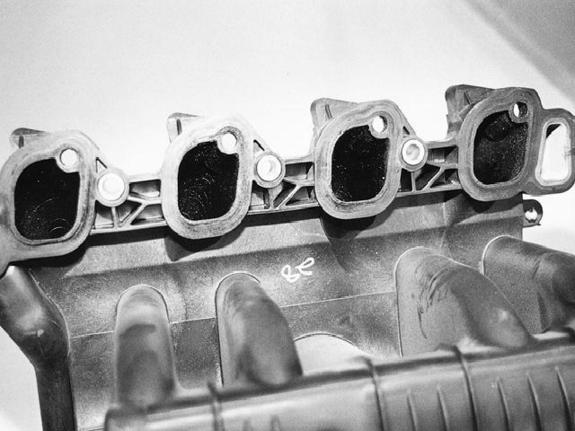
On the left is a cylinder head from an NPI engine. On the right is one
from a PI engine.

Some crownvic owners have found that they can use a 2001+ intake
manifold on their 1996-2000 vehicles if they swap in the later style
heater core return tube and apply some rtv around the seal port
surfaces. This is reported to increase airflow & horsepower to some
extent. But be warned that some crownvic owners have ended up with
difficult to diagnose driveability problems after this swap too.
2005 Crown Victoria Intake Swap Pictures
Below are some pictures taken by DetroitP71 on www.crownvic.net during
an intake manifold project on his 2005 crown victoria police
interceptor.
Here is the intake manifold valley. There are some differences to note
in the valley versus the 1998 police interceptor pictured above:
-The heater core return tube runs towards the driver's side of the
valley instead of through the center
-The intake manifold ports are PI rather than NPI teardrop
-The engine has a knock sensor located in the center engine valley.

A closeup of the knock sensor which was added starting in the 2003
model year. This allows the pcm to advance the ignition timing further
for more horsepower without the engine pinging/knocking.
Note that lincoln towncars recieved a knock sensor starting in the 1998
model year which is a few years earlier than the crownvic did.
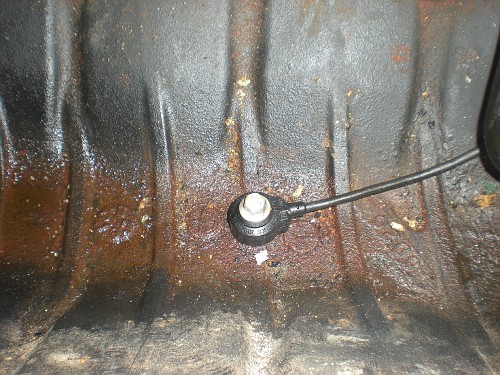
A closeup of the heater core return tube curvature near the waterpump
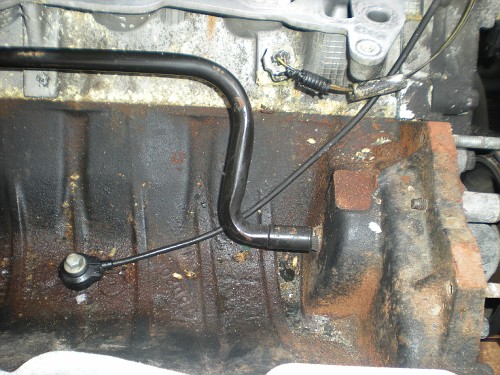

The new intake manifold installed
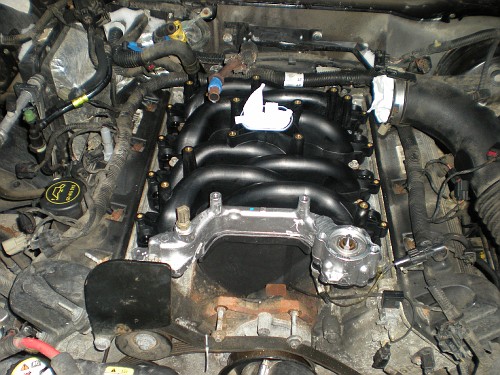
This 2005 crownvic has the same cursed crash bracket setup as the 1998
crownvic pictured above.
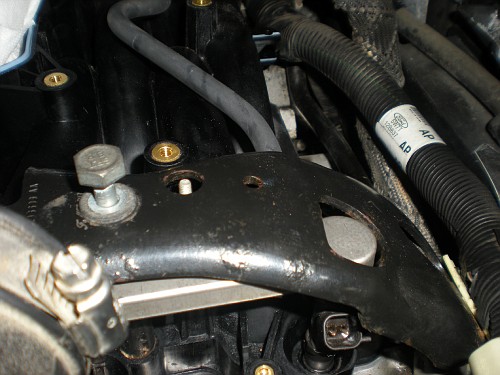
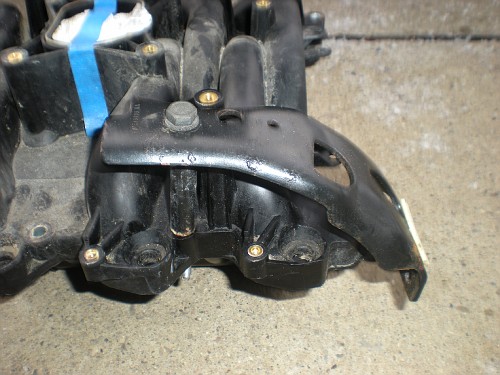
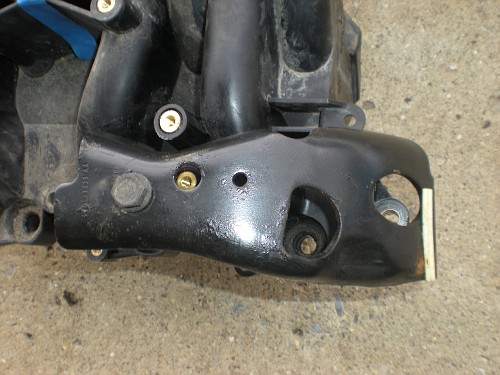
The new intake manifold in it's shipping box
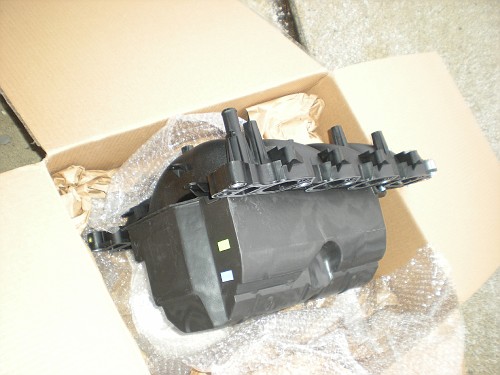
Starting in the 2003 model year, a foam insulator was introduced to
lower engine noise. This peice of foam appears to have been installed
as a noise shield when the engine knock sensor was introduced. But
you'll find many mechanics that think this part is not needed, and will
omit this part when replacing an intake manifold. So if you purchase a
used 2003+ police cruiser that has had it's intake manifold replaced
previously, don't be suprised if this part has gone missing to places
unknown.
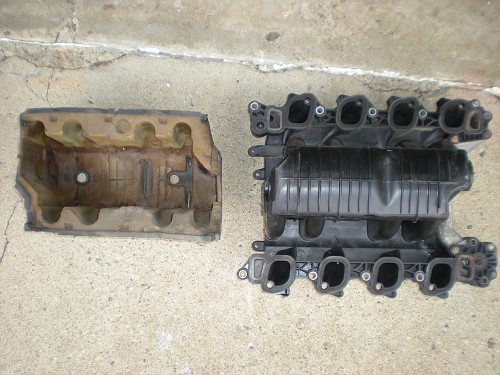
A couple pictures of the old leaking intake manifold from DetroitP71's
2005 crownvic. Do note that the ford original equipment intake manifold
in this car has an aluminum coolant crossover in the front. The portion
of the intake that was leaking is the small plastic peice wedged in
between the coolant crossover and the cylinder head below.
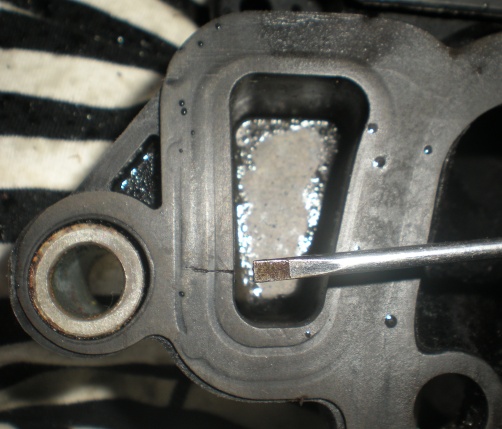
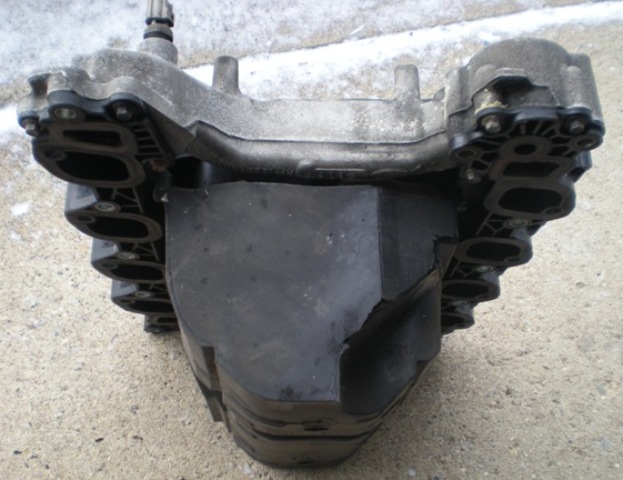
On the bottom of the 2003+ intake manifolds is a peice of foam. This
one has a bunch of cracks in it, but this part of the intake doesn't
have any coolant or air flowing through it. It's just a noise shield to
make sure that the engine knock sensor doesn't send noisy data to the
powertrain control module.
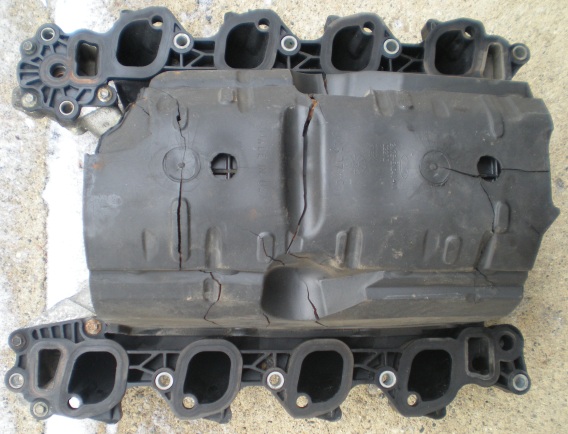
One issue that I noticed shortly after installing the dorman intake
manifold kit was that the upper radiator hose ran really close to the
alternator bracket near the waterneck gooseneck.
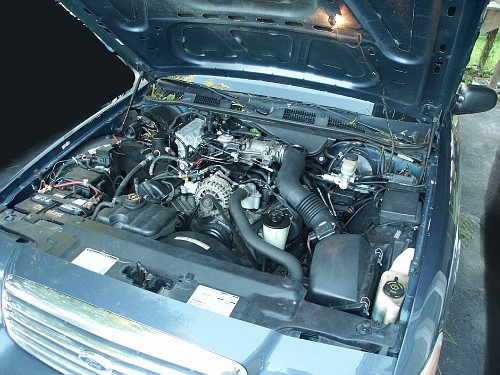
The oem ford intake manifold kit contains a new waterneck that angles
the hose differently and a revised upper radiator hose so that this
problem would not be encountered.

This particular waterneck appears to have been used only on 1998 model
year
crownvics, and if you have a 1996-1997 or 1999-2000 crownvic you
probably won't
encounter this clearance issue with the dorman intake manifold kit.
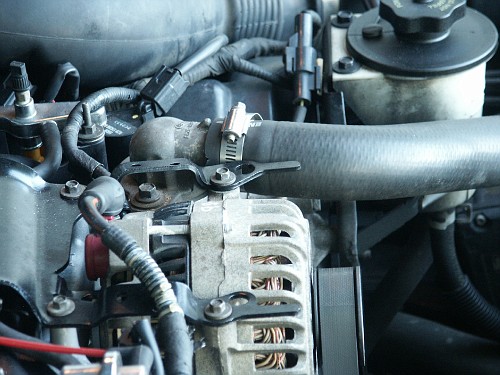
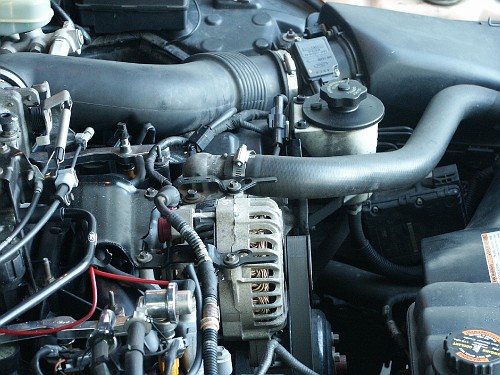
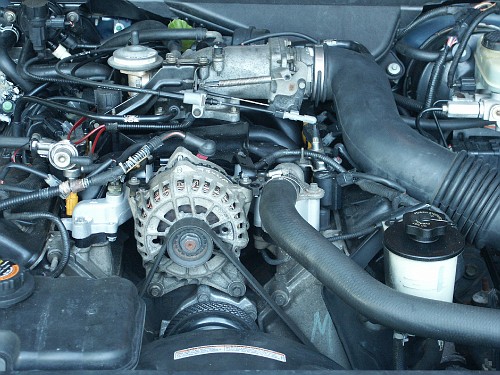

Here's a 2000 crownvic with a different waterneck for comparison
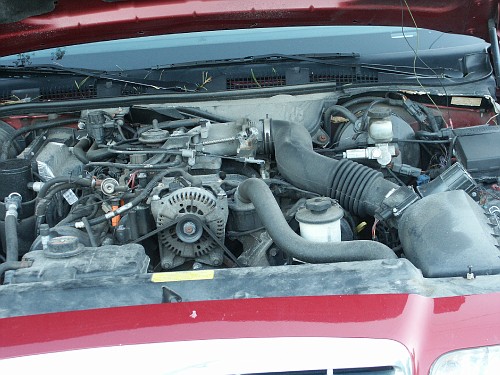

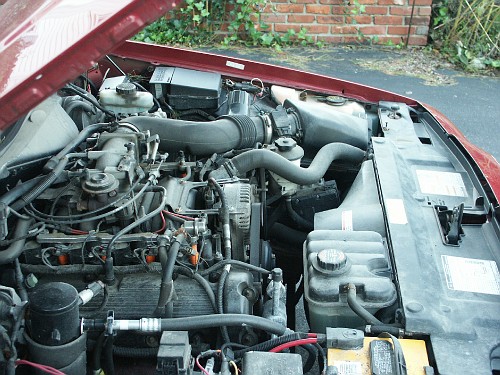
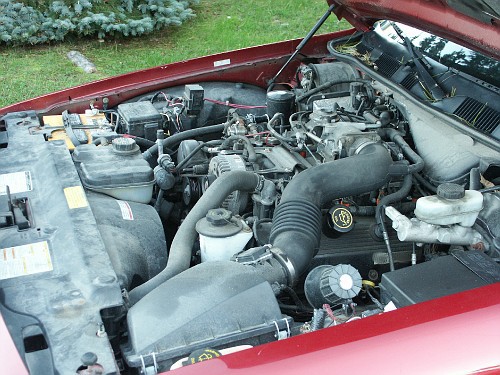
Notes:
The 1996 and later crown victorias have an intake
manifold constructed of a nylon resin with hot engine coolant flowing
through it. Intake manifolds on these cars are wear items that often
have to be replaced during the effective life of the vehicle.
If you purchased a "pre-owned" 1996-2000 police cruiser from auction,
there is a good chance that your intake manifold has already been
replaced. In severe police duty with lots of idling and high throttle
application, intake manifolds often didn't make it to 50k miles before
they sprung a leak on the front coolant crossover or near the
passenger's rear heater hose connection point.
There was a customer satisfaction program for 1996-2000 police cruiser
owners to have their intake manifolds replaced for free at their local
ford dealership if they expierenced coolant leaks and the vehicle was
less than 7 years old. But this program has long since expired because
all the affected vehicles are now over 7 years old.
Here are a collection of documents that ford issued about the 01M02
program:
http://www.p71interceptor.com/intakemanifold/01m02
There is also a parts update avaliable which includes a listing of the
parts inside each individual intake manifold kit:
http://www.p71interceptor.com/intakemanifold/01m02/tsb0222.html
And here is a collection of alternator & alternator bracket part
numbers:
http://www.p71interceptor.com/alternator/modelnumbers
Do note that the 01M02 customer satisfaction program does NOT apply to
2002 or later vehicles. And you will have to pay out of your own pocket
for this repair unless your crownvic is new enough and has low enough
mileage to still be covered under the ford factory powertrain warranty.
//////////////
The 1992-1995 crown victorias used a solid aluminum
intake manifold. Though the manifold itself is contructed of solid
metal rather than a plastic resin, these cars still sometimes encounter
intake manifold related problems:
-The aluminum intake manifolds tend to collect combustion debris
internally clogging up the EGR passages. This problem is essentially
unheard of on the later cars with the plastic intake manifolds.
-The aluminum corrodes around where intake manifold connects to the
cylinder head coolant passages. If corrosion is bad enough, you'll have
external leaks.
-The gaskets in between the intake manifold and cylinder heads can "dry
up" and start to leak. Most of the later cars will have had their
intake manifolds replaced by now, and will have had new gaskets
installed as part of the intake manifold replacement procedure.
-The heater core return hose which runs underneath the intake manifold
has a rubber section that attaches to the back of the waterpump. The
rubber changes texture as it gets older, and it's not uncommon on a 15+
year old crownvic to find your intake valley full of engine coolant
from a leak in this part. Many technicians will misdiagnose a leaky
under-intake-manifold-hose as bad freeze core plugs. And to repair this
hose, you have to remove the intake manifold. 1998+ crownvics have a
solid metal coolant return tube under the intake manifold that rarely
fails even in the "rust belt".
Also note that downgrading a later car to the early solid aluminum
intake manifold is not really a viable solution:
-The throttle body is turned at a different angle
-The egr system hardware is different
-Wiring harnesses are different lengths to accomadate the different
component layout.
-Many parts for the 1992-1995 cars such as accelerator cables are
obsolete and no longer avaliable as service parts from ford.
-The 2001+ cars have performance improved (PI) heads with different
shaped ports on the cylinder heads than the 1992-2000 cars did.
For performance minded individuals, also note that the early 1992-1995
intake manifolds are somewhat restricted in airflow compared to the
later units. This will lower engine horsepower & torque to some
extent.
//////
In the aftermarket, dorman/motormite sells an
intake manifold kit for the crown victoria/grand marquis/lincoln
towncar. This kit is considerably less expensive to purchase than the
oem ford kit from your local ford dealership. Although not an exact
replica of the oem part, the intake manfold kit seems to have good
durability in the field. If you order an intake manifold from autozone,
advance auto, pepboys, etc you're getting the aftermarket
dorman/motormite intake manifold kit.
/////
If you read through internet crown victoria message
forums, you'll encounter some people saying that replacing the intake
manifold on their car is really easy. Yet you'll find other people
claiming that their car never ran properly after they attempted to
replaced their own intake manifold. Here are a few tips about this
project:
-Do not use pneumatic air impact wrench to TIGHTEN any of the bolts.
Use only manual hand tools instead. This will take a little bit extra
time, but considerably lower your chances of stripping out the threads
in the aluminum cylinder heads.
-Use a torque wrench to ensure that the bolts are tightened to the
proper specifications.
-Follow the sequence listed in the factory shop manual for the final
tightening sequence for the intake manifold->cylinder head bolts.
-You will likely have problems removing the two really long bolts which
hold the upper radiator hose gooseneck to the intake manifold. A
pneumatic air impact wrench with the pressure regulator set really low
can usually break these bolts free without snapping them. If you stick
a socket with a really long breaker bar on these bolts, it's likely
that you'll snap the bolt in half. Removing the broken bolt remnants
will be a big project because these bolts are threaded directly into
the cylinder head underneath the intake manifold.
-1998 and later cars have a factory installed "crash bracket" covering
the rear of the driver's side fuel rail. You need to remove this
bracket before the intake manifold will come out of the car. You will
find this bracket easier to remove if you pull out the windshield wiper
housing first.
-Carefully note where each wiring & vacuum harness goes before
removing them. Take pictures with your camera if you are not familar
with these cars.
-The egr valve often doesn't want to seperate from the tube which
connects to the exhaust manifold. This is not usually a problem because
the bolts which hold the egr valve to the intake plenum usually seem to
turn freely. You will need a new egr valve gasket if you elect to use
this method though.
-If you are in a professional repair shop enviroment, there is an
alternative to removing the egr valve from the plenum. Use an
oxy-acetylene torch to heat the egr tube nut until it's a dull red
color. The egr tube nut should then spin freely while everything is
still hot. Wear gloves with thermal insulation and be careful not to
injure yourself during this task though.
-If you have back problems, you'll probably want to take your car to a
repair shop for this repair. During the intake manifold swap, you'll be
standing with your back bent over your car's fenders for a few hours.
-If you're working outside, look at the weather forecast before
beginning the project. You will have the intake manifold ports open
directly to the atmosphere. If it starts to rain really heavy during
the project, you could get lots of water inside your engine.
-It would be a good idea to purchase a new set of heater core hoses
before beginning this project. After rubber hoses have been installed
for several years, they often won't seal properly when they are
reinstalled onto the new intake manifold.
////////////////
When purchasing an intake manifold from your
local ford dealership, the parts counter consultant may ask whether you
have a 4G or a 6G alternator in your 1998-2000 crownvic. Here are some
pictures of the two different alternators side by side for visual
comparison.
http://www.p71interceptor.com/alternator/convert4g6g
Note that the aftermarket dorman/motormite intake manifold kit contains
a universal alternator bracket which fits both 4G and 6G alternators.
///////////
in the 1992-1997 crownvics, some taxicab companies
devised a quick & dirty hack to fix leaking under intake manifold
heater core return hoses.
first they would remove the old leaking heater core hose from the
waterpump nipple. then they would install generic heater core flex hose
onto the waterpump nipple and run the hose outside the engine valley to
the tube on the heater core near the firewall. this solution was
functional, but didn't look very nice.
//////////////
Part Numbers
Under Intake Manifold Heater Core Return Tubes
1992-1995 F1AZ-18B402-AF (supercedes F1AZ-18B402-A)
1996-1997 F6AZ-18B402-AC
1998-2000 F8AZ-18B402-BA (o-rings are W704593-S100)
2001-2002 1W7Z-18663-AA
2003-2009 3W7Z-18663-BA (to 04/06/2009)
2009-2010 9W7Z-18663-A (from 04/06/2009)
Water Pump->Heater Core Return Nipples
1992-1997 F1VY-8555-A (waterpump -> under intake tube)
1998-2010 F75Z-8555-AA (waterpump -> under intake hose tube.
includes two W704593-S100 o-rings)
"water bypass tube"
"pi coolant nipple"
Water Pump O-ring - F1VY-8507-A
Note: As of august 2010, it is less expensive to purchase a
F75Z-8555-AA water pump nipple which includes two W704593-S100 o-rings
than to purchase the two W704593-S100 o-rings seperatetly.
/////////
Ford oem crownvic intake manifold kits (Part Numbers current as of
02/08/2010)
1996-1997 F8AZ-9424-AAA (Kit to replace plastic intake) (2 holes in
coolant crossover)
1999-2000 F8AZ-9424-BAA (4G Civilian Alternator "Straight Fins In
Case") (1998 civilian crownvics have 6G alternator use F8AZ-9424-CA
kit)
(2 holes in coolant crossover)
1998-2000 F8AZ-9424-CA (6G Police Alternator "Curved
Fins In Case") (2 holes in coolant crossover)
1996-2000 F8AZ-9424-CB (Bare intake. No other parts
included. Used to replace service intake manifold with aluminum cross
over.) (2 holes in coolant crossover)
2001-2002 1W7Z-9424-AAA (4G Civilian Alternator) (only 1 coolant sensor
hole in crossover)
2001-2002 1W7Z-9424-BA (6G Police Alternator) (only 1 coolant
sensor hole in crossover)
2003-2005 3W7Z-9424-AE (foam noise shield included for engine knock
sensor) (only 1 coolant sensor hole in crossover)
2006-2009 6W7Z-9424-AA (From 06/19/2006 to 07/21/2008) (no holes in
coolant crossover. engine temperature computed using coolant head
temperature sensor data)
2009-2010 9W7Z-9424-A (From 07/21/2008)
/////
1998-2000 crownvics only use one sensor in the intake manifold coolant
crossover to measure coolant temperature. The other hole in the coolant
crossover is unused and has a metal plug in it.
The 1996-1997 crownvics use both holes in the coolant crossover, and
have two coolant temperature sensors. One sensor is for the engine
computer, the other for the temperature guage on the instrument cluster.
1998-2000 lincoln towncars do not have any coolant temperature sensors
installed in the front coolant crossover. Both holes have metal plugs
installed in them and engine temperature is computed using data from
the under-intake-manifold cylinder head temperature sensor.
Having two sensor mounting holes in the coolant crossover makes the
same intake manifold compatible with a wider range of vehicles. Unused
sensor holes can simply be plugged up and not cause any harm.
/////
Thermostat Parts
1996-2006 N811011-S309 Thermostat gooseneck bolt
2007-2010 W704693-S437 Thermostat gooseneck bolt M8x95mm
1992-2010 F1VY-8255-A Thermostat gasket (RG-571)
1992-1995 F1VY-8592-AA Gooseneck
1996-2000 F6AZ-8592-AB Gooseneck
1998-1998 F6ZZ-8592-C Gooseneck
2001-2008 1W7Z-8592-AB Gooseneck (To 12/03/2007)
2008-2010 9L3Z-8592-B Gooseneck (From 01/02/08)
/////////////
Suggested article revisions from DetroitP71
1. Include torque values, if you don't have them, I
do and they are also listed in the BOK "common torque values" you could
include a link to this post.
2. Include Intake manifold torque sequence order. This order is not the
same for all years. I don't know where the change happend, maybe NPI to
PI? I have a picture posted that shows both side to side. IMO it is
related to the crash bracket introduction.
3. This is a good time to replace the injector O-rings. I should have
pictures for that. O-rings are not cheap though and you will need two
bags. Fuel-rail in my case did not have to be removed I just moved it
to the side.
Same for plugs, they should at least be checked. The leaking coolant
could have caused some missfires, it did on mine, I even had a bad COP
that I replaced a week or so later.
4. Not sure if you want to include this but I would not suggest using a
Dorman for PI replacements. There is a very cheap source;
Fordracingparts.com (less them 50% of dealer pricing) or ADTR. Or get a
Ford OEM part from TascaParts.com, still a lot cheaper then the dealer.
5. There are issues with the brass heater hose insert leakage. There is
a picture on CVN that shows a ceative fix for this. If you want it I
can look it up.
6. Good point of taken the wiper tray out (good time to clean it out)
have you seen what I found in there? But if you are working outside,
like you pointed out this can be a risk. How about just covering up the
hood of the car with a tarp or a partial tarp. Rain is one thing but I
had to deal with snow that then accumulates and freezes.
7. When people work on this they might be inclined to clean the plenum
and Throttle body inside. The Trottle body and throttle valve should
not be cleaned sice they are coated. However EGR passages should be
inspected and cleaned.
//////
Closeup pictures of a crownvic intake plenum, egr valve, egr tube and
exhaust manifolds are avaliable on this webpage.
/////
There is documentation about replacing a 1997 mercury grand marquis
intake manifold online at: http://www.autoclinix.com/Manifold.htm
/////
it has been mentioned that you do not need to remove
the windshield wiper transmission from the 2003+ crownvics to access
the fuel rail crash bracket bolt on the back of the engine. the
2003-2010 cars have a different low profile windshield wiper housing
than the 1992-2002 cars do.
besides the different seats and tires/wheels, you can identify a 2003+
crownvic in the parking lot by how the windshield wipers park. in the
2003+ cars, the windshield wipers stay raised on the windshield even
when they're turned off. they do not entirely retract into the shaded
portion of the windshield like they do in the 1992-2002 cars.
/////
Question &
Answer
Can I print out this document?
Yes, printing is allowed. Digital Rights Management (DRM) is not
implemented on this particular webpage. But do note that you will need
close to a hundred sheets of paper to print a complete copy of this
document.
Is this document intended to replace
the ford shop manual procedure for intake manifold installation?
No. This document is intended to be a supplement to the ford shop
manual.
Why are acronyms like EGR, zip tube,
and other words that I don't understand used in this document?
This webpage is constructed with the assumption that the reader has
lots of background knowledge in automotive technology. Being an
automotive service technician is a highly skilled trade despite the low
wages and long work hours that people in this field often encounter.
It should be noted that there are numerous websites that teach a basic
understanding of car mechanics. Some specialty sites like
www.crownvic.net will cater specifically to your crownvic too.
How many miles can I expect to get
out of my intake manifold before it fails?
Unknown. This depends on a variety of factors including:
-Heat Load (i.e. Phoenix, Arizona versus Bangor, Maine)
-Engine Idle Time
-Mileage
-Driving Style (Young male teenager driving with many hard wide open
throttle runs versus an older grandmother driving and never getting
over 3000 RPM)
-Number of cold starts (The engine goes through an
expanision/contraction cycle every time it is started/stopped)
-Revision of the intake manifold (Ford has released several different
intake manifolds for these cars)
-A randomness factor
Do the intake manifolds with the
aluminum crossover ever fail?
Yes. Failure points include:
-the nylon resin in the area that the heater core hose connects
-the nylon resin that's wedged in between the aluminum crossover and
the aluminum cylinder heads
-the o-rings which seal the aluminum crossover to the nylon resin
underneath
Should I purchase a "pre-owned"
intake manifold from a salvage yard?
No. This is not a recommended practice. But if funding is really
limited, this could be a temporary fix to get your broken car back on
the road for a little while.
My mechanic offered to install a
"recycled" intake manifold on my car to "save me some money". Should I
take advantage of this offer?
If you depend on your car for daily transportation, this is not a good
repair choice. Intake
manifolds on these cars are wear items, and you do not know how much
life remains in a junkyard intake manifold. So you could end up paying
the installation labor charge twice (once you install the junkyard
intake, and again when the junkyard intake manifold fails and has to be
replaced). Your mechanic was a smart person to recommend the "recycled"
intake, he knows how to maximize his repair labor income at your
expense. He also knows how to create income for his friend the tow
truck driver.
I was browsing craigslist and found
an ad for an intake manifold that is listed as fitting all 1998+
crownvics. Should I purchase this intake manifold to replace the broken
one on my 2004 crownvic?
No. The seller in the craigslist ad is giving you incorrect application
information for the intake manifold. There is not a single intake
manifold model that fits every 1998 and later crown victoria without
modification. To ensure that you get an intake manifold that is
compatible with your car, you should purchase from a reputable parts
vendor like your local ford dealership, napa, autozone, pepboys,
rockauto.com, etc.
How much will my local ford dealer
charge to install a new intake manifold on my car?
Ford has a handful of different crownvic intake manifold kits
avaliable, but most of these cost somewhere around $600. So with a few
hours labor, figure a little over $1,000 for this repair. Having the
aftermarket dorman intake manifold kit installed at an aftermarket
repair shop may be a little cheaper. But you increase your risk of
unforseen problems by using an aftermarket repair shop because some of
the technicians at these shops have never installed a crownvic intake
manifold before.
Are there cars with more severe
intake manifold problems than the crownvic?
Yes. Some owners of vehicles with the general motors 3800 engines have
expierenced hydrolocked engines after intake manifold failure. In those
cars, hot egr gasses fatigue the intake manifold which allows liquid
coolant to flow into the air intake ports. On the crownvic, intake
manifold failure causes an external leak by contrast.
Can I stop an intake manifold leak by
using a $3.99 can of coolant stop leak product from pepboys?
No. This solution is not likely to be effective. But you do run the
risk of overheating your engine with this solution. Click here to view
some pictures of a radiator that's really plugged up from lots of stop
leak product being installed.
































































































































































